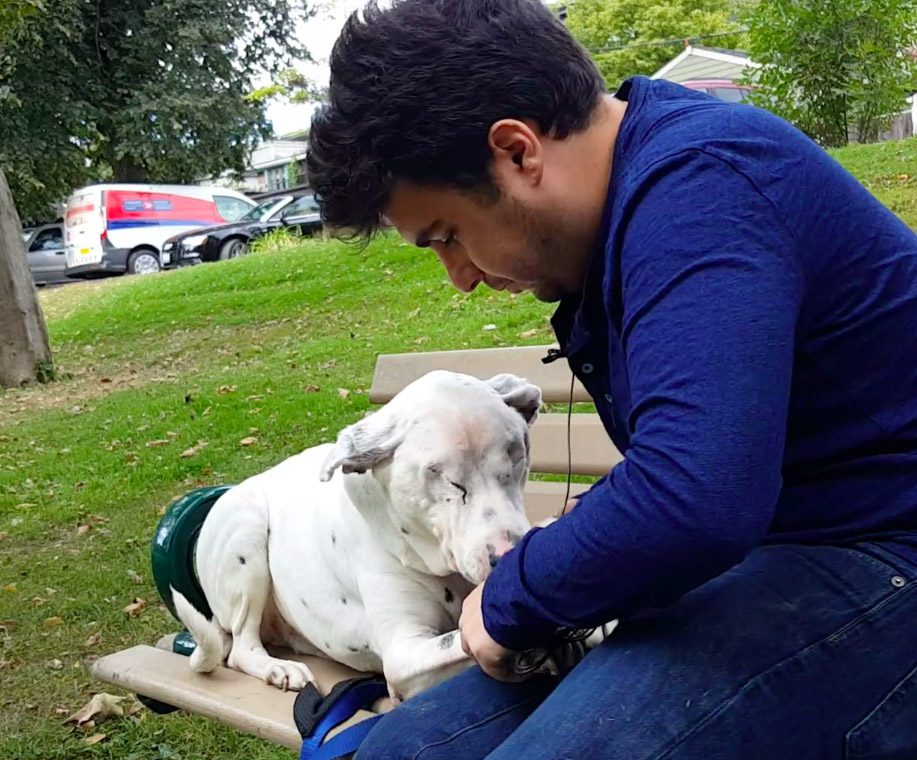A four-year old Dalmatian dog from Houston that was rescued and brought to Toronto has been through an arduous journey that saw the animal barely escaping being euthanized, and losing both his eyes.
“He was found in Texas with two severely infected eyes. And because of the severity of the infection they had to be removed,” Nicholas Dasko told The Toronto Observer Thursday.
Dasko is a foster parent for the blind Dalmatian, temporary caring for the dog after it was given a clean bill of health by the Ontario SCPA. The automotive consultant said “SA” is still adjusting to his disability.
https://twitter.com/saddewo/status/913463292953284609
“He can’t really see where he’s going so I have to direct him to where his food is and his water is at first. He’s slowly learning his way around the apartment and neighbourhood,” said Dasko.
The “calm and happy” SA is just one of 39 dogs looking for homes following Toronto group Redemption Paws’ rescue mission to flood-ravaged Houston in early September. The sheer number of homeless dogs had overwhelmed Texas rescue organizations – even before Hurricane Harvey hit the city.
Like SA, many of the rescues aren’t picture-perfect puppies.

Nicole Simone, founder of Redemption Paws, talks about the rescue mission to Houston and adoption requirement. (Bambang Sadewo/The Toronto Observer)
“We focused on taking the dogs most in need. That meant dogs with disability that have little chance of being adopted; dogs with neurological deficits, and dogs who are otherwise adoptable but have a minor medical disability,” said Nicole Simone, founder of Redemption Paws.
The “imperfection” list also includes deafness, and neurological problems – not to mention the trauma that many of the dogs have gone through.
“They’re probably going to have a post-traumatic stress when they go through their next thunderstorm here,” said Simone, a canine welfare advocate.
As for the adoption application criteria, Simone said they’re focusing on people who live in the Greater Toronto Area that don’t have children under 12 in their homes, and also don’t have cats, which is especially important for those looking to adopt the larger dogs.
“We don’t have their history, so we’re just trying to be safe,” she said, adding that the 92 per cent adoption rate in Ontario gives hope that the dogs will get to celebrate their first Canadian Thanksgiving in their new homes.
At Ramsden Park in Rosedale, Dasko was taking SA, and Gramps – his personal dog – out for walks.
“Sometimes I knee him in the head when we’re walking … I didn’t mean to,” said Dasko on one of the challenges of caring for a dog with disability.
He said SA likes to stay pretty close to him.
“Because he can’t see where you are. If he can feel, you it’s a lot of reassurance for him. So he really enjoys that,” he explained.
He said the “mellow dog” has a lot of characteristics that would make him great for therapy dog work.
“SA isn’t shy about going up to people and greeting them,” said Dasko. “He just wants to be loved.”








